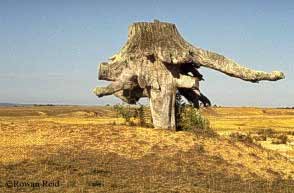|
Soil Erosion by Wind & Water

The top few centimetres of soil is usually the most fertile
and most valuable for crop and pasture production. While the
loss of a few millimetres of soil during a heavy downpour
or windstorm may not seem critical, the impact on farm productivity
and fertiliser requirements over a generation can be devastating.
Soil erosion down drainage lines and along watercourses causes
additional problems such as vehicle access, stock mustering
difficulties, increased fencing costs and reduced land value.
It is also unsightly and may ultimately affect property values.
Simply planting trees might hide the problem from view, but
solving an erosion problem generally requires more careful
planning and design. The first step is to identify the type
of soil erosion process:
• Wind Erosion
– loss of topsoil from open paddocks during strong winds.
• Sheet and
Rill Erosion – loss of surface soil during heavy
rain from across a paddock.
• Tunnel
Erosion – piping of sub-soils down steep slopes.
• Gully and
Streambank Erosion – widening channels in drainage
lines and along watercourses.
• Landslips
– mass failure of soils on steep slopes
Understanding the process can help identify where and how
trees might be used as a solution.
Back to top
|
